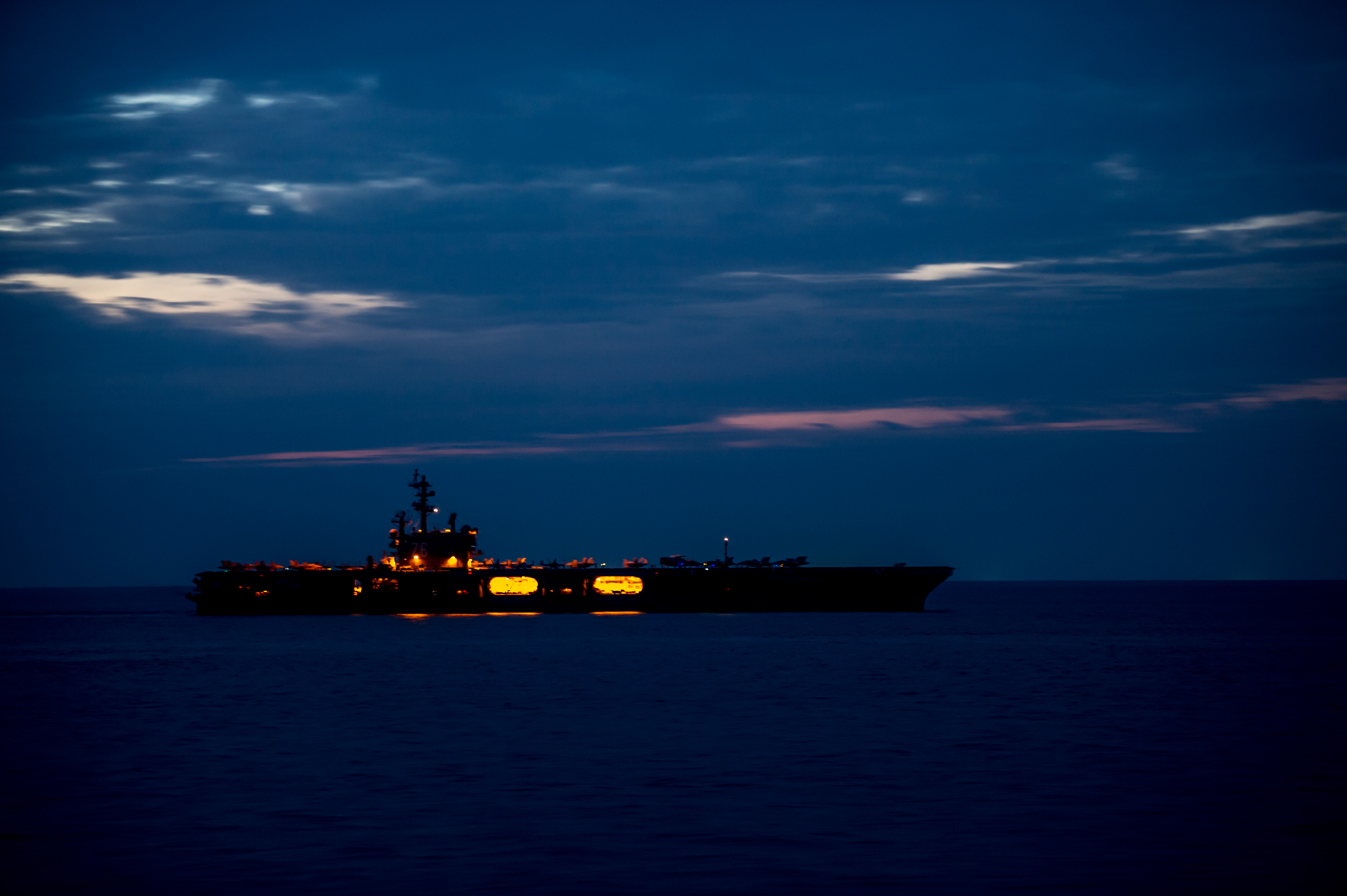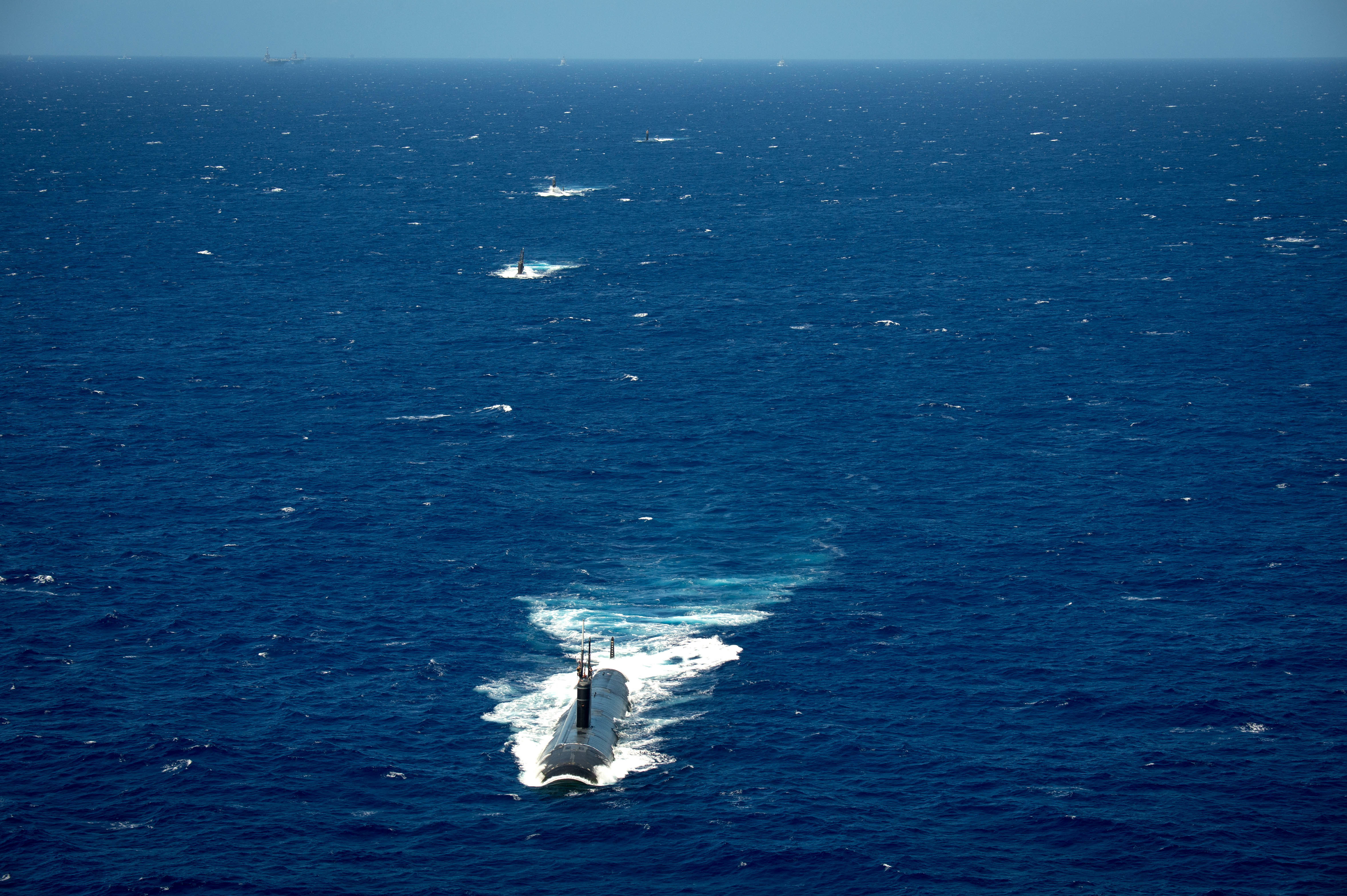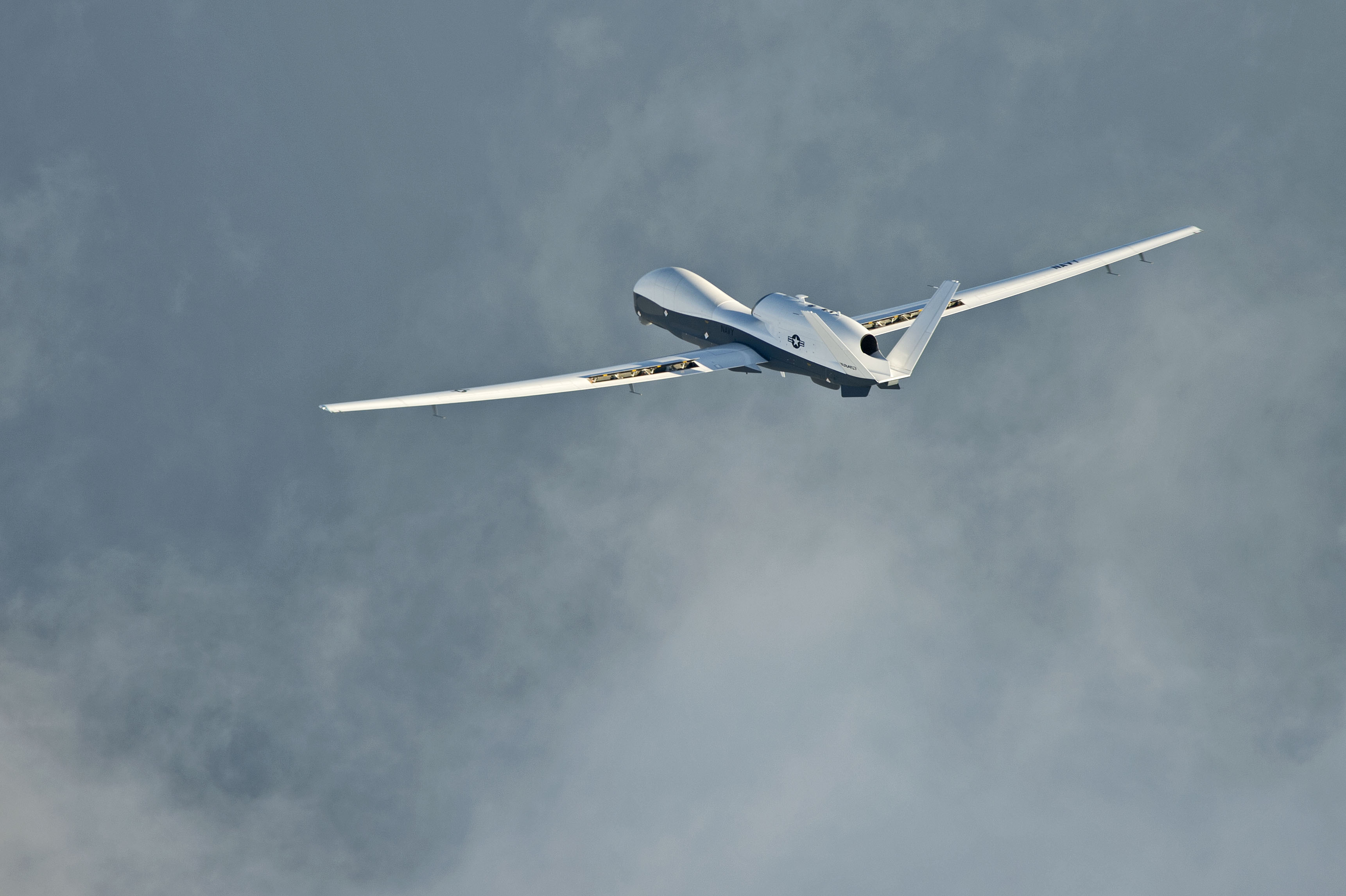
NATIONAL HARBOR, Md. – The Navy is discussing where to invest in increased interoperability between planes, ships and submarines, seeking opportunities to boost areas with the least capability today or the biggest potential return on investment, several warfare directors said on Wednesday.
Rear Adm. Nancy Norton, director of warfare integration for information warfare and deputy director for Navy cybersecurity (OPNAV N2N6F), said she and those working on information and communications systems are trying to boost interoperability through identifying “where we have the least capability and the greatest need” for better connections.
She said she and fellow panelist Rear Adm. Bill Merz, director of undersea warfare (OPNAV N97), had been working together closely “because the submarine force has extraordinary capabilities as a lone wolf, silent service, but bringing them into the netted force will bring exponential capability to the entire Navy and the Defense Department. So minor changes there really have some asymmetrical impacts” for the overall fleet capability.
She added that OPNAV N2/N6 was also looking at data fusion and other enablers for the whole force, in all domains, and “those niches where we have the greatest potential return on investment.”

Director of Surface Warfare (OPNAV N96) Rear Adm. Ron Boxall said the Navy is looking to identify those enablers they need to pursue in a smart way, through having a conversation first about how to fight and then what they need to win that fight.
“Back in the day we would say, what do we have, and how do we fight?” he said. Now, “we’re now looking at it from the other way in, saying, how are we going to fight, and what do we need to do that? What do we value? What do we prioritize?”
Boxall said the long-established Naval Aviation Warfighting Development Center and the newer Naval Surface and Mine Warfighting Development Center are now working together on interoperability in concepts and tactics, and those ideas are then pushed to the acquisition community to make decisions about what to buy to support interoperability among the domains.
He maintained that the Navy would have a smoother time integrating operators and their gear in different domains “knowing what we need first, prioritizing that, … and then we’ll have some robust discussions about where’s the right balance of trades and risks and cost.”
Director of Air Warfare Rear Adm. DeWolfe Miller (OPNAV N98) said the continued focus on interoperability will be important for his community, as naval aviators bring in new platforms that will change how the force as a whole operates. He described recent operations against the Islamic State, in which not only did naval aircraft strike targets as surface combatants launched missiles, but joint and coalition aircraft and ships participated as well.
As new manned and unmanned planes, such as the F-35 Lighting II Joint Strike Fighter, the P-8 Poseidon and the MQ-4C Triton begin operating overseas, “ten years from now, are we going to be able to do what we just showcased here in 2014 and what we’re doing every single day right now overseas? And as these techniques, tactics and procedures and as our equipment becomes more sophisticated and more integrated in the way we fight, how will we be able to [fight with] and how interoperable will we be with our joint and our allied forces?”

Merz, the undersea warfare director, noted that tight budgets in recent years have shrunk the fleet and made investments in new capabilities a challenge, but he said there were some surprising benefits that came out of the fiscal hardships that may make talks about interoperability a bit more informed.
“This era we’re coming through of seeing tight resources – not just tight, shrinking – in my mind, it’s required us to get a lot more creative on how to cover down on each other’s lack of capacity. But I’ll also tell you, we’re at the end of our rope in a lot of these areas of capacity,” he said.
“Through these efforts, some magic has happened. We’ve become very educated on each other’s key capabilities, and even more magical we’ve become actually defensive of each other’s capabilities and we’ve learned that you can’t invest in one aspect of the Navy and sacrifice another aspect. It’s just not that simple.”





